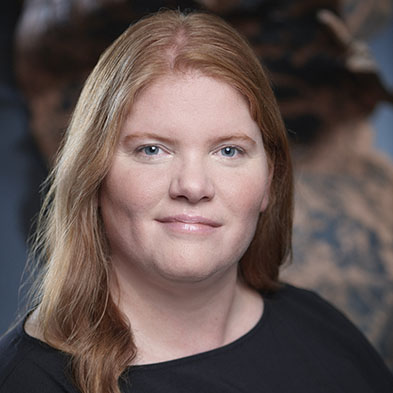
- This event has passed.
MSE Distinguished Speaker Series: From Planets to Atoms: Unveiling the Solar System’s History using Advanced Materials Characterization Techniques at the Royal Ontario Museum
The MSE Distinguished Speaker Series will be hosting Dr. Kim Tait and Veronica Di Cecco from the Royal Ontario Museum’s (ROM) Department of Natural History on Friday, April 26th at 2 p.m.
Don’t miss out on this opportunity to expand your knowledge, interact with leading figures in the field, and gain valuable perspectives in the intersection of research in Engineering and Natural Science. Coffee and refreshments will be provided ☕🍪. The guest speakers, researching collections of Minerals & Gems, Rocks & Ores, and Meteorites, will be giving a talk about the ROM’s analytical capabilities for materials characterization, and the research being done on museum collections.
From Planets to Atoms: Unveiling the Solar System’s History using Advanced Materials Characterization Techniques at the Royal Ontario Museum
📣 Speakers: Dr. Kim Tait & Veronica Di Cecco
📅 Date: Friday, April 26th, 2024
⏰ Time: 2:00-3:00 p.m.
📌 Location: Lassonde Mining Building (MB), Room 128
Seminar Abstract:
The Royal Ontario Museum holds a wealth of geological treasures accumulated since the late 1800s. Our collections of rocks, ores, minerals, gems, and meteorites offer a comprehensive view of Earth’s history and formation.
Beyond curation, the Museum is a vital research institution and houses a mineralogical laboratory. By using mineralogical and materials science tools, we can study planetary evolution and environmental change over billions of years. The chemical and structural record of minerals, such as mineral lattice growth and deformation, chemical zoning and substitution of elements and textural relationships of minerals, can tell us a lot about the conditions that the minerals formed in.
We will show how we use tools like X-ray Diffraction (XRD), Raman Spectroscopy and Electron Probe Micro Analysis (EPMA) to care for the collections. Building upon this, we will showcase how we use a broad range of cutting-edge correlative in-situ analytical techniques, such as Atom Probe Tomography (APT), Electron Backscatter Diffraction (EBSD), nanoSIMS and X-ray Computed Tomography (XCT) to push the limits of traditional mineralogy to the atomic scale, allowing us to tackle a range of relevant terrestrial and extraterrestrial projects.

Dr. Kim Tait, BSc, MSc, PhD.
Tech Endowed Chair of Mineralogy, Senior Curator of Mineralogy, Royal Ontario Museum; Professor, Earth Sciences, University of Toronto.
Dr. Kimberly Tait is the Teck Endowed Chair of Mineralogy (Curator of Mineralogy) at the Royal Ontario Museum (ROM) and an Associate Professor at the University of Toronto, Earth Sciences. She oversees all the Earth Science’s collections at the ROM, including minerals, meteorites, gemstones and rocks, and the diffraction and spectroscopy laboratories at the ROM.
Kim holds a PhD (2007) from the University of Arizona in Geosciences, a MSc. (2002) and BSc. (1999) from the University of Manitoba. She is also a Fellow of the Canadian Gemmological Association.
Kim has an international research program studying minerals from Earth, but also rare samples from the solar system, especially phosphate minerals. Her projects and students are funded via an NSERC Discovery Gran with an Accelerator Grant, which provides substantial and timely resources to researchers who have a superior research program that is highly rated in terms of originality and innovation, and who show potential to become international leaders within their field. Kim’s research program is focused on using minerals as probes of solar system evolution. Understanding the mineralogy of these rare extra-terrestrial samples is critical to unravelling the most puzzling paradox in the most puzzling paradox in the chronology of magmatism, the crystallization history of magmas, differentiation processes, and the conditions of crystallization of the crust of these ancient bodies.
Veronica Di Cecco, BSc, MASc.
Mineralogy and Geology Research Technician, Royal Ontario Museum.
Veronica is a mineralogy technician in the Department of Natural History. There, she is responsible for the analysis and identification of minerals, meteorites, gems and other inorganic materials. She also maintains the analytical equipment, supervises students in the lab, and is responsible for maintaining safety standards, both in the mineralogy lab and as the ROM’s Radiation Safety Officer. Her primary research interest is in the mineralogy of ore deposits.
Veronica graduated with a B.Sc. in 2011 with a specialist in Geology and continued her education at the University of Toronto with a M.A.Sc. (2013) under Professors Tait and Spooner. As part of her research, she traveled to Madagascar where she collected samples for her thesis on the mineralogy and geochemistry of a vanadium-graphite property (owned by NextSource Materials Ltd.).